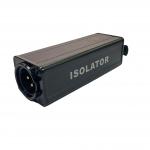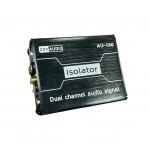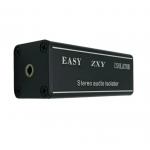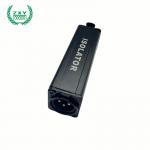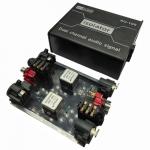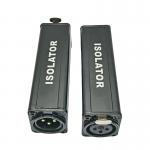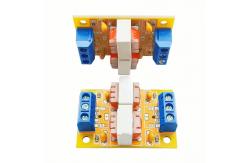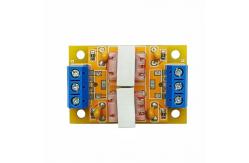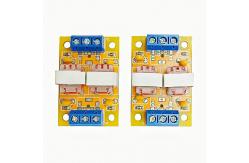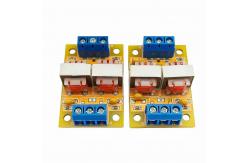Stereo Audio Isolator Common Ground Loop Suppressor Interference
Noise Isolation1.Product DescriptionThe Stereo Audio Isolator Common Ground is an essential and
versatile device in audio systems. It excels in separating left and
right audio channels, achieving robust electrical isolation. By
doing so, it effectively blocks electrical interference like pesky
hums and annoying buzzes that often plague audio setups. This is
especially crucial in professional recording studios where multiple
microphones and instruments are in use, ensuring that audio signals
from diverse sources remain pure and free from external electrical
noise, thus enabling high - quality recordings. Additionally, it
plays a pivotal role in enhancing signal integrity. By isolating
audio paths, it significantly reduces the risk of signal
distortion, which is vital for high - fidelity audio applications
such as broadcast stations aiming for clear content transmission
and high - end home theater systems striving to create immersive
soundscapes. Another remarkable feature is its ability to eliminate
ground loops. In audio setups with numerous interconnected devices
like in a home theater, it provides separate and isolated ground
connections for each audio channel, getting rid of the persistent
hum caused by ground loops and enhancing overall audio quality and
system stability. Moreover, it boasts versatile compatibility,
being easily integrated into a wide array of audio systems, from
small - scale home recording setups with basic audio interfaces and
microphones to large - scale commercial installations featuring
complex audio mixing consoles and multiple speakers. Constructed
with high - quality materials, it offers durability and
reliability, withstanding continuous use in various environments,
be it a humid live concert venue or a controlled recording studio,
ensuring consistent audio isolation over an extended period and
minimizing downtime due to equipment failure. 2.Performance Characteristics| Electrical Performance | Description | | Isolation Degree | It represents the ability to separate electrical signals between
different channels. High isolation degree effectively blocks
electrical interference between left and right channels, preventing
crosstalk. For example, in a frequency range of 20Hz - 20kHz, it
can achieve an isolation degree of over [X] dB, ensuring that
signals in one channel have minimal impact on the other. | | Insertion Loss | Refers to the attenuation of the audio signal during the
transmission through the isolator. A low insertion loss is crucial
to maintain the integrity of the audio signal. Generally, in the
audible frequency range, the insertion loss of Stereo Audio
Isolator Common Ground is less than [Y] dB, meaning that the signal
strength is only slightly reduced, and the original audio quality
can be well preserved. | | Common - Mode Rejection Ratio (CMRR) | Measures the ability of the isolator to reject common - mode
signals (signals that are the same in both channels). A high CMRR
value indicates strong anti - interference ability. In practical
applications, the isolator can achieve a CMRR of more than [Z] dB
at a certain frequency, effectively eliminating common - mode
interference such as power - line - induced hum, ensuring a clean
audio signal output. | | Input and Output Impedance | The input impedance is designed to match the output impedance of
audio sources, such as microphones or audio devices, to ensure
efficient signal transfer. Usually, the input impedance is around
[Input Impedance Value] ohms. The output impedance is designed to
match the input impedance of subsequent audio processing equipment,
like amplifiers or mixers, with a value of approximately [Output
Impedance Value] ohms. Proper impedance matching helps to minimize
signal reflection and distortion. | | Frequency Response | Describes how the isolator responds to different frequencies of
audio signals. In the audible frequency range from 20Hz to 20kHz,
the frequency response should be as flat as possible. The deviation
from the ideal flat response is within a certain range, for
example, 卤 [Frequency Response Deviation] dB. This ensures that all
frequencies of the audio signal are processed equally, without any
particular frequency being overly amplified or attenuated. |
|
